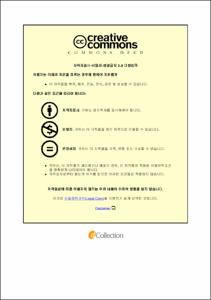Studies on light emitting diode(LED) and temperature effects on marine microalgal biomass production, lipid accumulation and fatty acid composition
- Abstract
- 미세조류는 빠른 성장, 높은 바이오매스 생산량, 및 높은 지질 축적으로 인해 차세대 바이오 연료로 주목되어왔다. 또한, 미세조류에서 생산된 긴사슬지방산은 건강보조제로써 중요한 기능을 한다. 1장에서는, Nannochloropsis salina, Isochrysis galbana 및 Phaeodactylum tricornutum의 바이오매스와 지질생산에 대한 파장혼합비율, 광주기 및 녹색파장(520nm)의 영향을 연구하기 위해 청색(465nm), 적색(660nm) LED가 사용되었다. I. galbana 및 P. tricornutum의 최대 균체 생산량은 청색과 적색 파장 LED의 50:50 혼합비에서 얻어졌으며 N. salina의 최대생산량은 적색 LED에서 얻어졌다. N. salina와 P. tricornutum의 최대 바이오매스 생산량은 24:0h 명/암주기에서 각각 0.75 gdcw/L와 1.07 gdcw/L을 나타내었다. 그러나, I. galbana는 18:6h 명/암주기에서 바이오매스로 0.89 gdcw/L을 나타내었다. 녹색 LED에서 N. salina, I. galbana 및 P. tricornutum의 최대 지질 함량은 각각 49.4, 63.3 및 62.0%(w/w)였다. Eicosapentaenoic acid (EPA)와 docosahexaenoic acid (DHA)는 P. tricornutum에서 1%, 그리고 I. galbana에서 2%를 얻었다.
2장에서는, 14 L 바이오리액터를 이용하여 Nannochloropsis oceanica 대량 배양을 위해 1 단계로서 청색파장(465nm) LED를 조사하여 최대의 균체량을 얻은 뒤 녹색파장(520nm)을 이용하여 스트레스로서 지질을 생성하는 2 단계 배양과 온도조절을 통하여 다중불포화지방산 (polyunsaturated fatty acid)을 생성하는 3 단계 배양공정을 적용하였다. 첫 번째 단계에서 청색(465nm) LED와 용존산소량, 광도 그리고 광주기를 포함한 미세조류 성장촉진 매개변수를 최적화하여 균체량 0.75 gdcw/L을 얻었다. 두 번째 단계에서는 녹색(520nm) LED하에 지질생산을 위한 조절을 최적화하여 24:0 h 명/암주기, 250 µmol.m-2s-1 광도에서 57.6%(w/w)의 지질을 얻었다. 또한, 세 번째 단계에서는 낮은 온도로 다중불포화 지방산(PUFAs) 생산을 위한 온도를 최적화하였다. 5℃의 낮은 온도 조건 하에 N. oceanica에서 EPA, DHA를 포함한 다중불포화지방산(PUFAs)이 74% 증가했다.
- Issued Date
- 2018
- Awarded Date
- 2018. 8
- Type
- Dissertation
- Publisher
- 부경대학교
- Affiliation
- 부경대학교 대학원
- Department
- 대학원 생물공학과
- Advisor
- 김성구
- Table Of Contents
- List of Figures and Table III
요약 VI
Chapter. I. Effects of wavelength mixing ratio and photoperiod on microalgal biomass and lipid production in a two-phase culture system using LED illumination
1.1. Introduction 1
1.2. Materials and Methods 4
1.2.1. Microalgae strains and culture conditions 4
1.2.2. Illumination source for microalgae cultivation 7
1.2.3. Determination of microalgal growth 9
1.2.4. Total lipid determination 10
1.2.5. Fatty acid methyl ester (FAME) determination 10
1.2.6. Statistical analyses 11
1.3. Results and Discussion 12
1.3.1. Effect of blue and red LED mixing ratios on cell biomass production and lipid accumulation 12
1.3.2. Effects of photoperiod on microalgal growth 17
1.3.3. Effect of green wavelength stress on lipid accumulation 21
1.3.4. Fatty acid composition 25
1.4. Conclusion 28
1.5. References 29
Chapter. II. Enhancement of biomass, lipid and PUFA production in Nannochloropsis oceanica cultured in 14-litre photobioreactor using a combination of single wavelength LEDs and temperature stress in three-phase culture system
2.1. Introduction 37
2.2. Materials and Methods 41
2.2.1. Microalgal strain and culture medium 41
2.2.2. Photobioreactor and illumination system 41
2.2.3. Experimental design 44
2.2.4. Determination of microalgal growth 45
2.2.5. Total lipid determination 45
2.2.6. Fatty acid methyl ester (FAME) determination 46
2.2.7. Statistical analyses 47
2.3. Results and Discussion 48
2.3.1. Effect of aeration rate on cell biomass production of N. oceanica 48
2.3.2. Effects of light intensity on N. oceanica growth and lipid accumulation 51
2.3.3. Effects of photoperiod on N. oceanica growth and lipid accumulation 55
2.3.4. Effect of low temperature on cell biomass production and lipid accumulation of N. oceanica 58
2.3.5. Effect of low temperature on fatty acid composition in algal lipid 61
2.4. Conclusion 66
2.5. References 67
2.6. Acknowledgment 73
- Degree
- Master
- Files in This Item:
-
-
Download
 Studies on light emitting diode(LED) and temperature effects on marine microalgal biomass production.pdf
기타 데이터 / 1.1 MB / Adobe PDF
Studies on light emitting diode(LED) and temperature effects on marine microalgal biomass production.pdf
기타 데이터 / 1.1 MB / Adobe PDF
-
Items in Repository are protected by copyright, with all rights reserved, unless otherwise indicated.